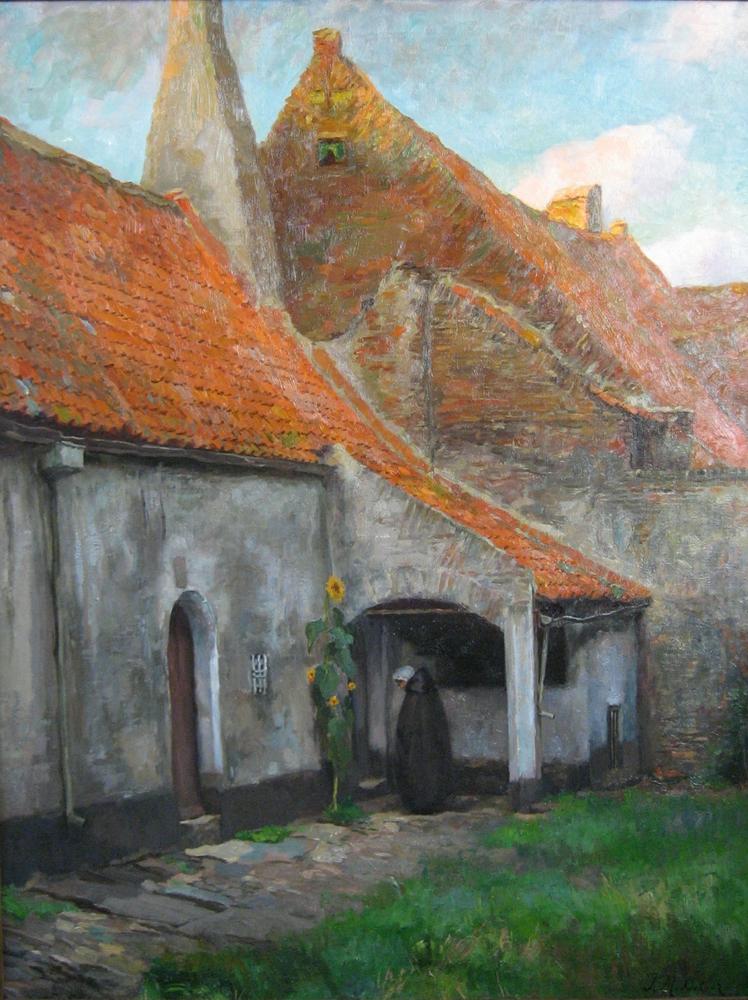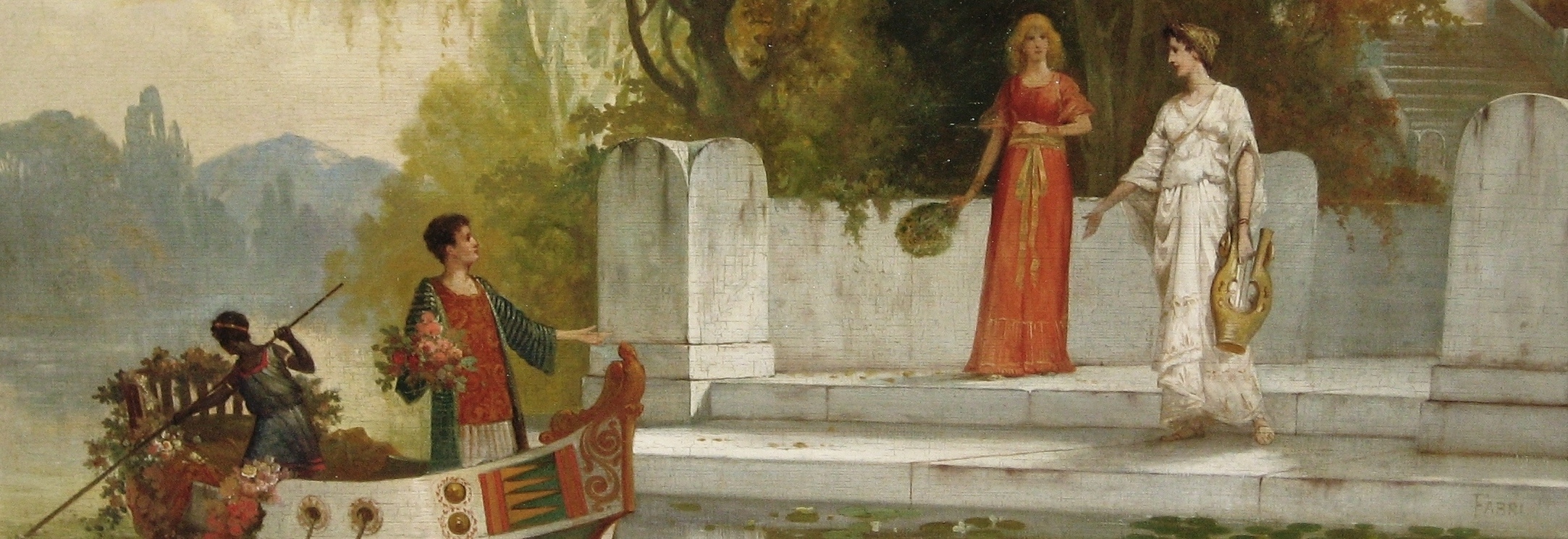JOSEPH MIDDELEER (1865 - 1934): Beguinage (Bruges)
Signed below right, oil on canvas, dimensions without frame 90 x 118 cm. Price € 1.450.
Pay attention to the dimensions of this impressive painting by Joseph Middeleer. If you can provide in the space on the wall this painting requires, you are able to create a convincing resting point in your interior. The daring bright greens in the grass, the blue glow on the roof tiles and the violet colored clouds, draw you into the painting like in a dream. The key of the master in the pasty paint is literally tangible.
Joseph Middeleer was educated at the Brussels Academy of Fine Arts under the direction of the genre painter Frantz Meerts (1836-1896). Since 1883 Middeleer was a member of the 'Cercle des Aquarellistes et des Aquafortistes Belges' . In 1885 he stood at the cradle of the art movement 'Voorwaerts', together with his teacher Meertens and Marie de Bièvre. In 1887 Middeleer won the prize for applied arts from the 'Académie Royale des Sciences, des Lettres et des Beaux-Arts de Belgique'.
Middeleer worked, among other things, as a restoration painter. He gained fame in 1898 as a restorer of the 15th century murals in St. Martin's Church in Meise in Flanders. He painted two new scenes that can still be admired on the spot. Middeleer, who worked most of his life in Bruges, has exhibited several times. Like many Belgian artists around the turn of the century, he was a symbolist. Unlike the visual arts that take the sensible perception as a starting point, symbolism was focused on the subconscious (Freud), the inscrutable and the enigmatic. Hence the flattering with the mystical, occultism and sometimes even satanism (Rops).
That Middeleer was a convinced symbolist is evidenced by his repeated participation in the so-called 'Gestes Esthétiques' between 1892-1897 together with, among others, Fernand Khnopff. These symbolist art salons were initiated by the Frenchman Joseph Péladan, who considered art as being of divine origin (see his: 'L'art idéaliste et mystique'). A well-known symbolic painting by Middeleer is 'Une démoniaque' that is sometimes mentioned in the same breath as the famous painting 'Méduse endormie' by Fernand Khnopff.
The monumental painting that we offer from this Flemish master, probably stems from a later period. The picture exudes an unprecedented serenity. The seclusion of the beguinage provides the viewer a sense of security and privacy. The pasty applied paint, and the expressive colorite contribute significantly to this atmosphere. The solitary sunflower creates a symbolic undertone and stands for gratitude - an appropriate symbol therefore. The Groeninge Museum in Bruges, where the famous Flemish primitives can be admired, has three works by Middeleer painted in the same manner as this canvas.







